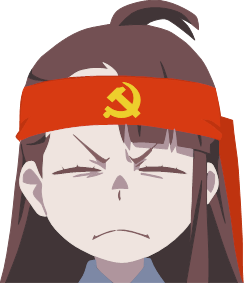.....n the union side, things were more political: on one hand, there was the problem of a unilaterally negative representation of the USSR and the stressing of Japan’s role within the Western side. On the other hand, there was the question of labor conditions, as Tôei’s workers had no choice but to work on a movie that they ideologically rejected…… ……However, the most interesting aspect of this entire affair is that the mobilization did not end here. On the contrary, it helped cement workers’ movements not just in Tôei, but in the entire anime industry, around the ideas of pacifism and anti-government activism….. movie came out in a very specific, and perhaps unfortunate, context: that of the mandate of Prime Minister Yasuhiro Nakasone. Nakasone was a conservative politician who, during his time as Minister of Defense in 1972, had raised the budget of the JSDF and supported Japan having its own arsenal of nuclear weapons.….he is mostly remembered for his friendship with US President Ronald Reagan and his proclamation that Japan would serve as an “unsinkable aircraft carrier for the US”. On domestic policy, Nakasone also followed Reagan’s example, leading a major wave of privatizations and favoring a nationalist ideology. In a highly controversial move, he was the first Prime Minister to visit Yasukuni Shrine (which lists among the enshrined multiple war criminals) in an official capacity in 1985. In other words, the political climate was tense.....
....In April 1983, a flyer opposing Nakasone’s government and policy was circulated throughout all anime studios in Tokyo by acoalition between the three major workers’ groups of the industry….. big names like yasuo Otsuka, Isao Takahata, Hayao Miyazaki, Yoshifumi Kondô and Yoshinori Kanada…veterans …young people that had just entered the industry like Akiyuki Shinbô ….many of the signatories from older generations, they were naturally closer to the more traditional Japanese Communist Party. In any case, such a reunion of people from all over the industry was a historic event.The flyer was titled “Stop the Nakasone Government! Let’s Build a Peaceful Tokyo” and tackled multiple issues. Generally, it expressed a strong opposition to Nakasone’s policies: the support for US military operations in Japan, the lack of subsidies for education and culture, and the shrinking of social measures for the elderly. More concretely, the appeal was centered around the impact of those nation-wide policies over the Tokyo metropolis and called for mobilization....
....It states: “In order to change the metropolitan government as soon as possible, the Japanese Communist Party, the youth, labor unions and various democratic organizations have united around the JCP, and have begun to fight for the creation of a new, peaceful and safe metropolitan government.”...
…. Also alongside the JCP, they were involved in a wider protest movement against the “Prevention of Espionage Relating to State Secrets” Act, which had been submitted at the Diet by the Nakasone government in 1985 and planned to enforce harsh punishment (including the death penalty) for those leaking, intentionally or not, confidential documents. This heavily debated act did not pass, with one of the major arguments of the opposition resting on freedoms of speech and press.


I love Yaz's art style and work on Gundam, happy to know they have good politics too.
Young Yasuhiko participated (and was arrested later for em and detained for 1 month) in the Yasuda Auditorium incident in 1969(video), in which students of the All Communist Party occupied the building for 2 days until police suppressed them with water cannons and tear gas and also at the occupation of Hirosaki University for 3 weeks. His face even appeared on a local newspaper following the arrest
Damn now I really like him!